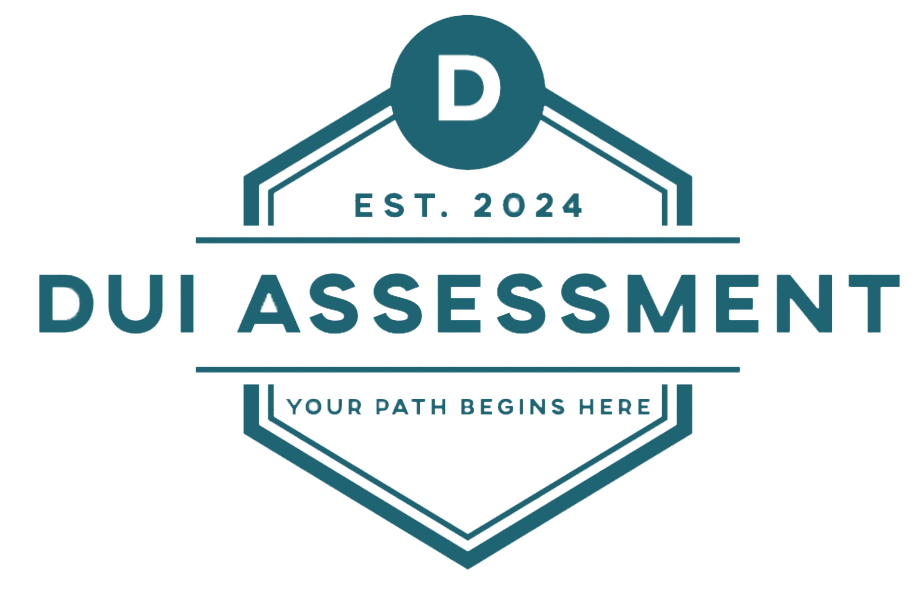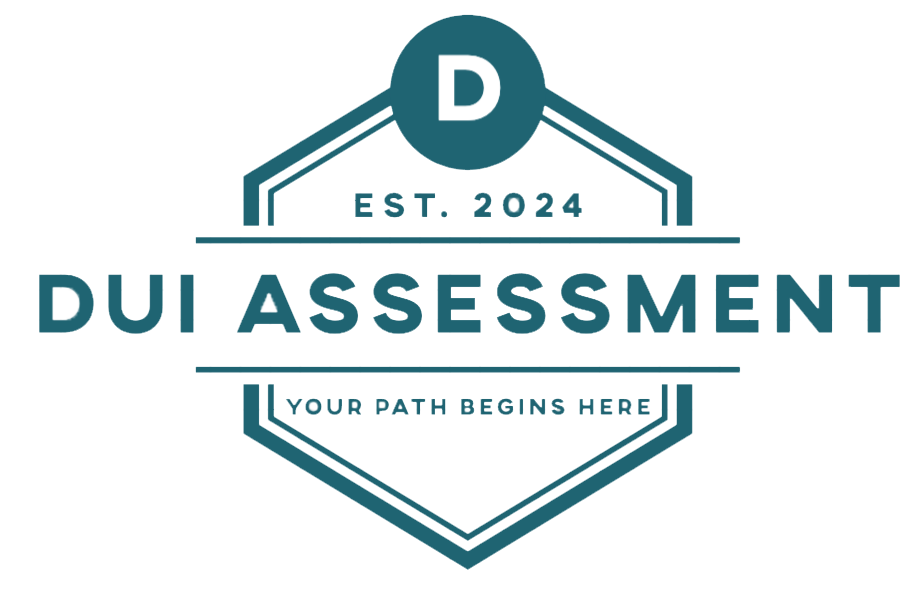Losing your driver’s license after a DUI conviction can feel overwhelming and isolating, but understanding the reinstatement process is the first step toward regaining your driving privileges and your independence. If you’re wondering how to get my license back after a DUI, you’re not alone – millions of Americans face this challenge each year, and while the process can be complex, it’s entirely manageable with the right information and preparation.
The path to license reinstatement varies significantly depending on your state, whether this is your first offense, and the specific circumstances surrounding your case. Learning how to get my license back after a DUI requires understanding these variations and preparing accordingly. However, there are common elements that apply across most jurisdictions, including mandatory waiting periods, completion of educational programs, proof of insurance, payment of fees, and often the installation of an ignition interlock device. Understanding these requirements early in the process can help you avoid delays and get back on the road as quickly as legally possible.
Each state has developed its own approach to DUI license reinstatement, reflecting local priorities and legal frameworks. Some states offer streamlined online processes, while others require in-person visits to motor vehicle departments. Some impose shorter suspension periods for first offenses, while others mandate lengthy revocations even for initial violations. Despite these variations, the fundamental principle remains consistent across all jurisdictions: demonstrating that you’ve learned from your mistake and are committed to safe, sober driving.
The financial cost of license reinstatement often surprises people who focus primarily on avoiding jail time during their criminal case. Between reinstatement fees, insurance requirements, educational programs, and ignition interlock devices, the total cost can easily reach several thousand dollars. Planning for these expenses early can prevent delays in your reinstatement process and help you budget effectively during what’s already a financially challenging time.
Understanding the Two-Track System: Administrative vs. Criminal Suspensions
Before diving into the specific steps for license reinstatement, it’s crucial to understand that most DUI cases result in two separate license actions that run on parallel tracks. The first is an administrative suspension imposed by your state’s motor vehicle department immediately following your arrest, based solely on either failing a chemical test or refusing to take one. The second is a criminal suspension or revocation that occurs after conviction in criminal court.
These two suspensions often run concurrently, meaning they overlap in time rather than running consecutively. In most cases, whichever suspension period is longer determines your overall timeline for eligibility to seek reinstatement. However, each suspension may have different requirements for reinstatement, and you must satisfy all requirements from both proceedings before your full driving privileges can be restored.
The administrative suspension typically begins 30 days after your arrest and is based purely on the concept of implied consent – the legal principle that by driving on public roads, you’ve agreed to submit to chemical testing if arrested for DUI. This suspension occurs regardless of whether you’re ultimately convicted of the criminal DUI charge. The criminal suspension, on the other hand, only takes effect upon conviction and may have different duration and requirements.
Understanding this dual-track system is essential when planning your reinstatement strategy. Some people make the mistake of focusing only on the criminal case, thinking that a dismissal or reduction of criminal charges will automatically restore their license. In reality, the administrative suspension remains in effect independently and must be addressed through separate procedures with the motor vehicle department.
Step 1: Determine Your Specific Requirements and Eligibility Date
The first and most important step in learning how to get my license back after a DUI is determining exactly when you become eligible for reinstatement and what requirements you must meet. This information should be contained in the notice of suspension or revocation that you received from your state’s motor vehicle department, but these notices can sometimes be confusing or incomplete.
Most states provide online tools that allow you to check your license status and view specific reinstatement requirements. These systems typically require your driver’s license number and other identifying information, and they provide personalized information about your suspension period, eligibility date, and outstanding requirements. If your state doesn’t offer online access, you can typically obtain this information by calling the motor vehicle department or visiting a local office.
Your eligibility date is not the date your license is automatically reinstated – it’s simply the earliest date you can apply for reinstatement. Think of it as the date when you become eligible to begin the reinstatement process, not the date your privileges are restored. The actual reinstatement typically occurs days or weeks after your eligibility date, depending on how quickly you complete the required steps and how long your state’s processing takes.
Keep in mind that if you have multiple suspensions or violations on your record, your eligibility date may be affected by the most recent or most serious offense. Some states also impose minimum periods that must elapse before you can even apply for restricted or hardship licenses, which can provide limited driving privileges before full reinstatement.
Step 2: Complete Mandatory DUI Education or Treatment Programs
One of the most common requirements for license reinstatement across all states is completion of a state-approved DUI education or substance abuse treatment program. These programs are designed to address the underlying issues that led to impaired driving and reduce the likelihood of repeat offenses. The specific program requirements vary dramatically by state and often depend on factors like your blood alcohol content at the time of arrest and whether you have prior offenses.
First-time offenders typically face shorter programs focused on education about alcohol and drugs, the dangers of impaired driving, and strategies for avoiding future violations. These programs usually involve attending weekly group sessions for a period of weeks or months. More serious offenses or repeat violations often require intensive outpatient treatment programs that may include individual counseling, group therapy, and regular drug and alcohol testing.
The cost of these programs varies widely but typically ranges from several hundred to several thousand dollars, depending on the length and intensity of the required treatment. Most programs require payment upfront or within the first few sessions, and financial assistance may be available for those who qualify based on income. Some programs offer payment plans, but completion of all requirements is necessary before you can receive the certificate needed for license reinstatement.
It’s important to enroll in and complete these programs as early as possible, even if your license suspension period hasn’t ended. The programs themselves can take months to complete, and waiting until you’re eligible for reinstatement to begin the program will only delay your return to legal driving. Additionally, many states require that you complete the program before you can be considered for any type of restricted or hardship license.
Step 3: Obtain and Maintain SR-22 Insurance
Understanding SR-22 insurance is crucial when learning how to get my license back after a DUI, as this requirement catches many people off guard and can significantly complicate the reinstatement process. An SR-22 is not a type of insurance policy – it’s a certificate that your insurance company files with your state’s motor vehicle department to prove that you carry the minimum required liability coverage.
The SR-22 requirement typically lasts for three years from either your conviction date or your license reinstatement date, depending on your state’s laws. During this entire period, you must maintain continuous coverage without any lapses. If your insurance policy is canceled or lapses for any reason, your insurance company is required by law to notify the motor vehicle department, which will typically result in immediate suspension of your license.
Obtaining SR-22 coverage usually involves contacting your current insurance company to add the SR-22 filing to your existing policy. Many insurance companies provide this service for a filing fee of around $25, although some companies don’t offer SR-22 filings and may require you to find a new insurer. The bigger challenge is often the dramatic increase in insurance premiums that typically accompany DUI convictions, as insurers classify DUI offenders as high-risk drivers.
If you don’t own a vehicle, you’ll need what’s called “non-owner SR-22 coverage,” which provides liability protection when you drive vehicles that belong to others. This coverage is typically less expensive than standard auto insurance but is still required to maintain your SR-22 filing. Even if you don’t plan to drive immediately after reinstatement, you must maintain the SR-22 filing continuously for the entire required period.
Step 4: Pay All Required Fees and Fines
The financial aspect of license reinstatement often involves multiple fees paid to different agencies, and organizing these payments can be complicated. You’ll typically owe court fines related to your criminal conviction, administrative fees to the motor vehicle department for license reinstatement, and potentially additional fees related to ignition interlock devices or other monitoring programs.
Court fines must usually be paid in full before you can seek license reinstatement, and these can range from hundreds to thousands of dollars depending on your state and the circumstances of your case. Some courts allow payment plans, but all payments must be current and in compliance with the court’s requirements before your license can be reinstated.
Motor vehicle department fees typically include a reinstatement fee that varies by state but commonly ranges from $50 to $200. Some states impose additional fees for DUI-related suspensions, and you may also owe fees for taking required written or road tests as part of the reinstatement process. These fees must typically be paid at the time you apply for reinstatement and are usually non-refundable even if your application is denied for other reasons.
It’s important to keep detailed records of all payments made, including receipts and confirmation numbers. Some people discover too late that a payment wasn’t properly credited to their account or that additional fees were assessed, resulting in delays in the reinstatement process. Maintaining organized records can help resolve these issues quickly if they arise.
Step 5: Install and Maintain an Ignition Interlock Device
Ignition interlock devices have become increasingly common requirements for DUI license reinstatement, with most states now mandating their use for all DUI convictions or offering them as an option to reduce suspension periods. These devices essentially function as portable breathalyzers connected to your vehicle’s ignition system, preventing the engine from starting if alcohol is detected in your breath sample.
The installation process typically begins with contacting a state-approved vendor to schedule an appointment for device installation. These vendors are usually automotive service centers that have been certified by the state to install and maintain ignition interlock devices. The installation appointment usually takes one to two hours and involves connecting the device to your vehicle’s electrical system and calibrating it to your specific breath patterns.
Monthly maintenance appointments are required throughout the period you’re required to have the device, typically costing $60 to $100 per month in addition to the initial installation fee of $100 to $200. During these appointments, the vendor downloads data from the device showing any violations or attempted circumvention and performs calibration to ensure accurate readings. Missing a maintenance appointment is typically considered a violation that can result in extension of your interlock requirement.
The device requires breath samples not just when starting your vehicle, but also at random intervals while driving, known as “rolling retests.” These tests are designed to ensure that you remain sober throughout your trip and prevent someone else from providing the initial breath sample to start the car. The device includes a camera that photographs you during each test, creating a record of who is operating the vehicle.
Step 6: Navigate State-Specific Procedures and Requirements
While the general categories of requirements are similar across states, the specific procedures for how to get my license back after a DUI can vary dramatically depending on your jurisdiction. Some states offer streamlined online application processes that can be completed entirely remotely, while others require multiple in-person visits to motor vehicle offices and administrative hearings.
States like California have developed comprehensive online systems that allow you to check your status, upload required documentation, and even pay fees through web-based portals. The California DMV’s online system provides step-by-step guidance tailored to your specific situation and can significantly reduce the time and complexity of the reinstatement process. Other states have been slower to adopt digital processes and still require paper applications submitted by mail or in person.
Some states, particularly those with higher DUI rates, have implemented specialized DUI courts or administrative hearing processes that require you to appear before a hearing officer to demonstrate your eligibility for license reinstatement. These hearings may involve testifying about your completion of treatment programs, your current sobriety, and your plans for maintaining sober driving in the future.
The timeline for processing reinstatement applications also varies significantly by state. Some states can process complete applications within a few days, while others have backlogs that can result in waiting periods of several weeks or months even after all requirements are met. Understanding your state’s typical processing times can help you plan accordingly and avoid frustration with delays.
Step 7: Consider Restricted or Hardship Licenses During Suspension
Many states offer some form of restricted or hardship license that allows limited driving privileges during your suspension period, which can be crucial for maintaining employment and meeting family obligations. These licenses typically allow driving only for specific purposes such as work, school, medical appointments, and court-ordered programs like DUI education classes.
The eligibility requirements for restricted licenses vary by state but typically include enrollment in DUI education programs, installation of an ignition interlock device, and proof of SR-22 insurance. Some states require you to serve a minimum portion of your suspension period before becoming eligible for restricted privileges, while others allow immediate enrollment in hardship programs.
The application process for restricted licenses often involves appearing at a motor vehicle office or administrative hearing to demonstrate your need for driving privileges and your compliance with program requirements. You’ll typically need to provide documentation of employment or school enrollment, medical needs, or other circumstances that require driving. The restricted license will specify exactly when and where you’re allowed to drive, and violations can result in revocation of the restricted privileges and extension of your full suspension period.
It’s important to understand that restricted licenses still require compliance with all the requirements that will eventually be necessary for full reinstatement, including ignition interlock devices and SR-22 insurance. Think of a restricted license as a step toward full reinstatement rather than an alternative to meeting all requirements.
Step 8: Prepare for Required Testing and Evaluations
Depending on your state and the circumstances of your case, you may be required to retake written knowledge tests, road skills tests, or both as part of the reinstatement process. These requirements are most common for cases involving high blood alcohol content, accidents, or multiple offenses, but some states require testing for all DUI-related reinstatements.
The written test typically covers traffic laws, safe driving practices, and specific information about impaired driving and its consequences. While the test content is similar to what you took when originally obtaining your license, it may include additional questions specific to DUI-related topics. Study materials are usually available online through your state’s motor vehicle department website, and taking practice tests can help ensure you pass on your first attempt.
Road tests for DUI reinstatements may be more comprehensive than standard driving tests and could include specific scenarios designed to assess your judgment and decision-making abilities. The examiner may pay particular attention to your ability to follow directions, maintain proper following distances, and demonstrate defensive driving techniques. If you haven’t driven legally for an extended period due to your suspension, consider practicing with a licensed driver before taking your road test.
Some states also require substance abuse evaluations conducted by licensed professionals as part of the reinstatement process. These evaluations assess your current relationship with alcohol and drugs and may result in recommendations for additional treatment or monitoring. The evaluation process typically involves interviews about your drinking history, current habits, and plans for maintaining sobriety.
Step 9: Understand Common Challenges and How to Overcome Them
Learning how to get my license back after a DUI involves understanding the common pitfalls that can delay or complicate the reinstatement process. One of the most frequent issues is incomplete documentation, where applicants think they’ve met all requirements but discover that paperwork is missing or incorrectly completed when they attempt to apply for reinstatement.
Financial challenges often create delays in the reinstatement process, as the total cost can be substantial and many people underestimate the various fees involved. Between court fines, reinstatement fees, insurance increases, program costs, and ignition interlock expenses, the total financial impact can easily reach several thousand dollars. Creating a comprehensive budget early in the process can help avoid surprises and allow you to plan for these expenses.
Technical violations of ignition interlock requirements are another common source of delays. These devices are sensitive and can register false positives from various sources including mouthwash, cold medication, certain foods, or even environmental factors. Understanding how to properly use the device and what substances to avoid can prevent violations that could extend your interlock requirement or delay your reinstatement.
Administrative errors by agencies involved in the process can also create frustrating delays. These might include lost paperwork, incorrectly processed payments, or communication failures between different agencies. Maintaining detailed records of all interactions, payments, and submissions can help resolve these issues quickly when they arise.
Step 10: Plan for Long-Term Compliance and Monitoring
Successfully completing the initial reinstatement process is just the beginning of your long-term compliance obligations. Most states impose ongoing requirements that can last for years after your license is reinstated, and violating these requirements can result in immediate suspension and the need to restart the entire reinstatement process.
The SR-22 insurance requirement typically continues for three years from your reinstatement date, and maintaining continuous coverage during this entire period is crucial. Even a brief lapse in coverage due to missed payments or policy cancellation will trigger automatic suspension of your license. Setting up automatic payments and maintaining open communication with your insurance company can help avoid inadvertent lapses.
Ignition interlock requirements may continue for extended periods even after license reinstatement, particularly for repeat offenders or cases involving high blood alcohol content. Some states require interlock devices for up to two years or more, and premature removal of the device will result in immediate license suspension. Understanding the full duration of your interlock requirement and planning for ongoing monthly costs is essential for maintaining compliance.
Regular monitoring and check-ins with probation officers, treatment providers, or court officials may also continue after license reinstatement. These requirements are typically part of your criminal sentence rather than the license reinstatement process itself, but violations can affect your driving privileges. Maintaining compliance with all aspects of your sentence is important for protecting your newly restored driving privileges.
Conclusion
Understanding how to get my license back after a DUI requires patience, organization, and careful attention to your state’s specific requirements. While the process can seem overwhelming at first, breaking it down into manageable steps and addressing each requirement systematically will help ensure success. The key is starting early, staying organized, and seeking help when you need it.
The most important thing to remember is that license reinstatement is achievable for virtually everyone who commits to following the required steps. Research shows that first-time offenders who stay organized and complete requirements promptly can often reinstate their licenses within 2-3 months of becoming eligible, while those who delay or struggle with compliance may take much longer.
Planning for the financial costs, understanding your state’s specific procedures, and maintaining compliance with ongoing requirements will help ensure that your return to legal driving is permanent. Remember that the reinstatement process is designed not just to restore your driving privileges, but to help ensure that you never find yourself in this situation again.
If you’re still wondering how to get my license back after a DUI, the answer lies in taking that first step: contacting your state’s motor vehicle department to understand your specific requirements and eligibility timeline. From there, it’s simply a matter of working through each requirement methodically and maintaining your commitment to safe, sober driving for the future. At DUI Assessment, we provide exactly that. Visit our website today at www.dui-assessment.com to learn more.



